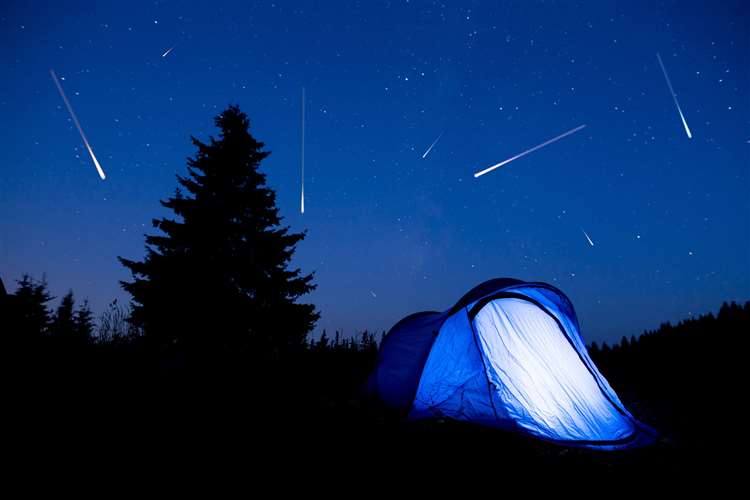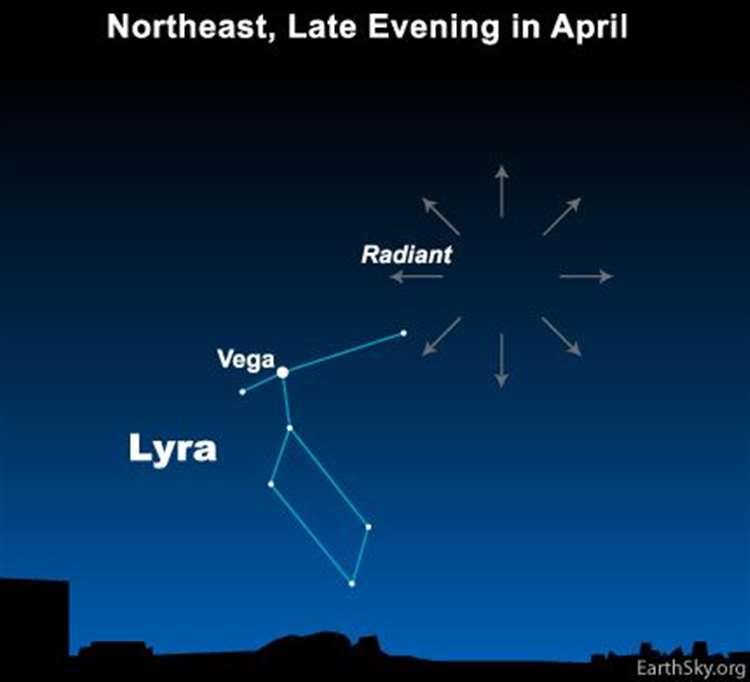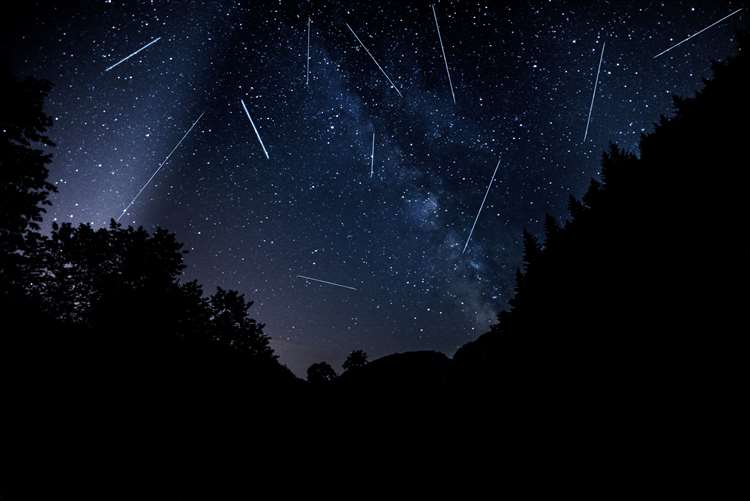The Lyrid meteor shower is one of the most spectacular celestial events in the meteorological calendar.
Occurring every year from mid-April, this year it will be visible with the naked eye from the night of Saturday, April 15 to the morning of Wednesday, April 26, with the peak occurring on the night of Saturday, April 22 into the early hours of Sunday 23, just after the new moon, so conditions are favourable for sightings.
The Lyrid meteor shower is caused by the Earth passing through the trail of debris left by the Comet C/1861 G1 Thatcher. As the debris enters Earth’s atmosphere, it burns up, creating a streak of light that we see as a meteor. The Lyrid shower is known for its bright fireballs, which can be seen even from light-polluted areas.

If you want to witness this amazing light show, here’s what you need to know…
Firstly, find a location away from any bright lights that obstruct your view of the sky – the darker the sky, the better your chances of seeing the meteors.
It is useful to have a view which is as close to the horizon as possible, as this will increase the amount of meteors you can see. A location with a clear, open sky, such as a park or countryside, would be ideal.

You should look towards the north-east direction. The bulk of the meteors appear to originate from the constellation Lyra, which is situated near the bright star Vega. However, you don’t need to focus solely on the constellation to see the shower, as the meteors can appear anywhere in the sky.
The best time to view the Lyrid meteor shower is between midnight and before dawn, with the peak around 2am to 4am.
Ideally, you want to find a comfortable spot (blankets are optional, but highly recommended!) and stay in the darkness for at least an hour to allow your eyes to adjust. This will help you to see even the faintest meteors streaking across the sky.
You can expect to see a meteor every couple of minutes, with 15-20 an hour being around the peak rate, each one travelling at a speed of around 29 miles (47km) per second.

A stronger shower, the Eta Aquariids, begins on Wednesday, April 19, a day before the new moon, which means if you have a good field of view you may see more meteors than the usual Lyrid peak.
On occasion, the Lyrid meteor shower has been known to ‘storm’ as Earth passes through a denser patch of the comet’s dust stream. The last time this happened was in 1982, when hundreds of meteors per hour were seen.
The chances of that happening again this April are slim, but it is a variable that might make for a truly out-of-this-world experience.








 Photographer Finds Locations Of 1960s Postcards To See How They Look Today, And The Difference Is Unbelievable
Photographer Finds Locations Of 1960s Postcards To See How They Look Today, And The Difference Is Unbelievable  Hij zet 3 IKEA kastjes tegen elkaar aan en maakt dit voor zijn vrouw…Wat een gaaf resultaat!!
Hij zet 3 IKEA kastjes tegen elkaar aan en maakt dit voor zijn vrouw…Wat een gaaf resultaat!!  Scientists Discover 512-Year-Old Shark, Which Would Be The Oldest Living Vertebrate On The Planet
Scientists Discover 512-Year-Old Shark, Which Would Be The Oldest Living Vertebrate On The Planet  Hus til salg er kun 22 kvadratmeter – men vent til du ser det indvendigt
Hus til salg er kun 22 kvadratmeter – men vent til du ser det indvendigt  Superknepet – så blir snuskiga ugnsformen som ny igen!
Superknepet – så blir snuskiga ugnsformen som ny igen!  Meteorite That Recently Fell in Somalia Turns Out to Contain Two Minerals Never Before Seen on Earth
Meteorite That Recently Fell in Somalia Turns Out to Contain Two Minerals Never Before Seen on Earth  Nearly Frozen Waves Captured On Camera By Nantucket Photographer
Nearly Frozen Waves Captured On Camera By Nantucket Photographer  It’s Official: Astronomers Have Discovered another Earth
It’s Official: Astronomers Have Discovered another Earth 